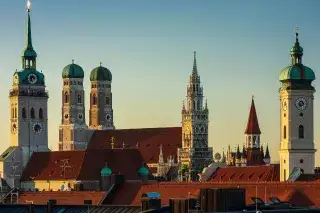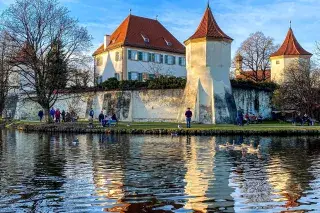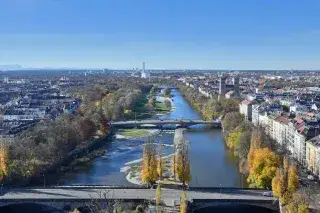Popular place to rest near Stachus in the heart of Munich
Old Botanical Garden: A quiet park in the city center of Munich
The landmarked Old Botanical Garden not far from Stachus has been given a new lease of life. The historic park with the Neptune Fountain has been carefully upgraded and modern sports facilities have been added. An ideal place for a break or to relax after shopping in the nearby pedestrian zone.

More actions
Green heart between the main station and Lenbachplatz
The heart of the park is the Neptune Fountain opposite the Palace of Justice. Lush flowerbeds bloom here from spring to fall and are maintained by the building department. Next to it is a lawn for sunbathing and a café with a beer garden.
The only building that has been preserved since the garden was founded is the entrance portal in the eastern section. The early classicist gate by Portuguese architect Emanuel Herigoyen was not damaged in the Second World War and has been showing visitors the way into the Old Botanical Garden for over 200 years.
Somewhat hidden in a small wood right next to the Neptune Fountain is the so-called Art Pavilion, where artists from Munich and all over the world initiate contemporary and critical art projects.
Karl-Stützel-Platz with the Staccioliring
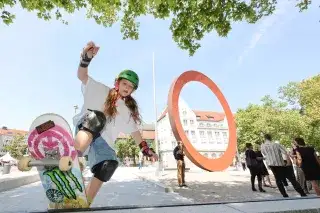
Karl-Stützel-Platz closes off the Old Botanical Garden to the west. Since 1996, it has been dominated by the 12-metre-high Staccioli Ring, an oversized circular sculpture. The steel work by artist Mauro Staccioli (1937-2018) weighs 14 tons. New features include a small soccer pitch made of artificial turf, a 10x12 meter streetball pitch and a skate spot, which are open to everyone free of charge. There is also access to a large playground for children.
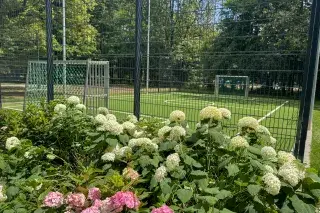
History of the Old Botanical Garden
The Old Botanical Garden was designed by landscape architect Friedrich Ludwig von Sckell and the site was completed in 1812. The Old Botanical Garden was planned in the shape of the letter D.
During the Nazi era, the Old Botanical Garden was redesigned as a city park according to the plans of Paul Ludwig Troost and was given the layout it still has today. The Neptune Fountain (1937), a coffee house with beer garden on the former site of the glass palace entrance and the art pavilion were also built during this period.
The heavy bombing of the area around the main railway station during the Second World War between 1942 and 1945 led to numerous impacts in the green area, and the art pavilion and Neptune Fountain were destroyed.
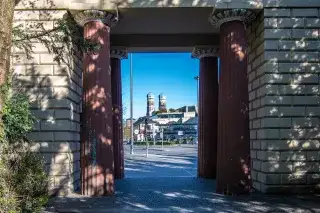
In the post-war years, the Old Botanical Garden was initially left to its own devices and became increasingly overgrown. It was not until 1949 that the Neptune Fountain was restored and the art pavilion was rebuilt a year later. As a result, the Old Botanical Garden largely had the appearance that we still know today.
From 2024, the quality of stay was improved with pruning of trees, new sports facilities, better lighting and an ordinance banning alcohol and weapons.
At a glance
Old Botanical Garden
Sophienstr. 7
80333
München
Barrier-free access
Barrier-free accessibility in the building

